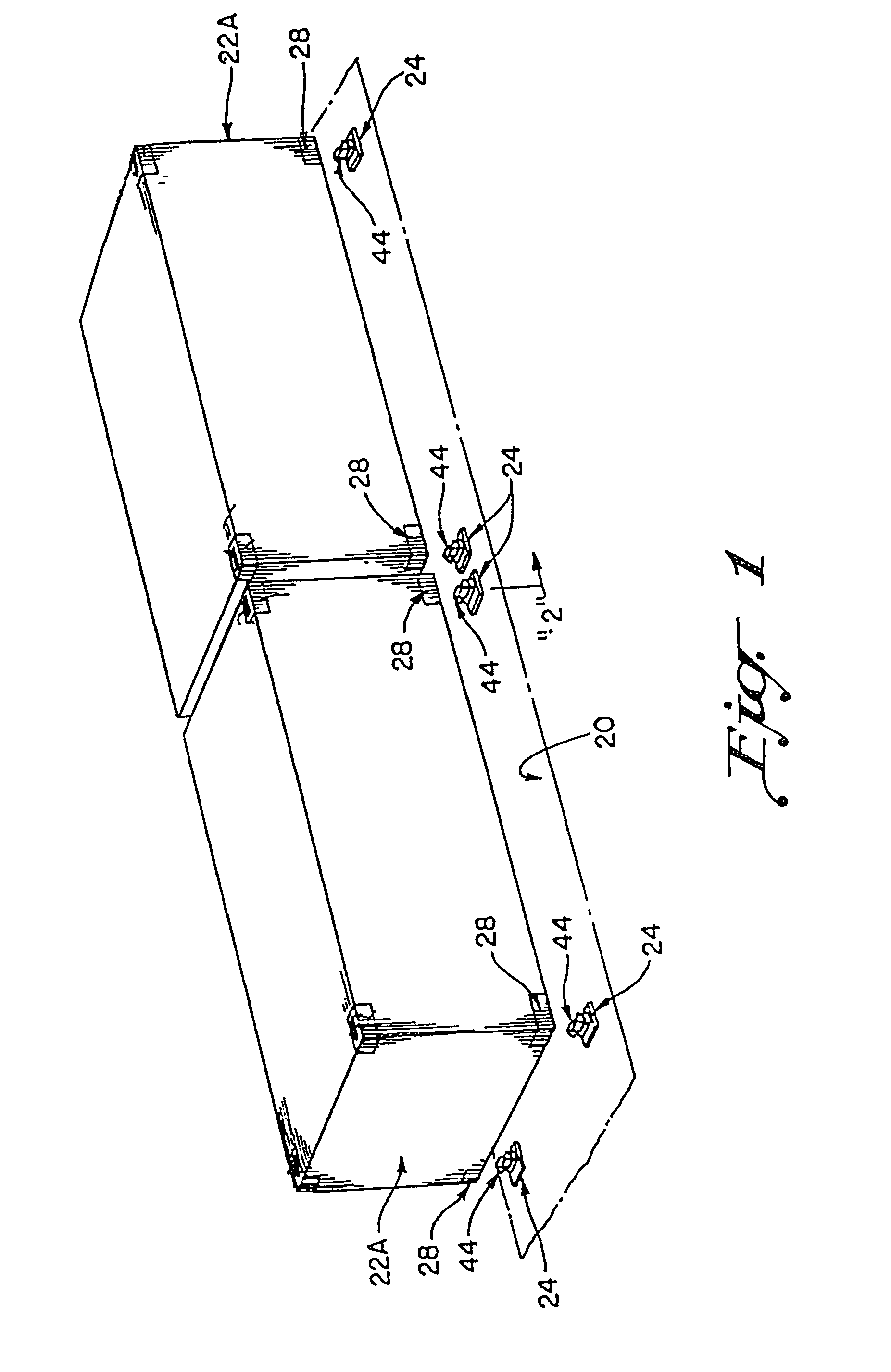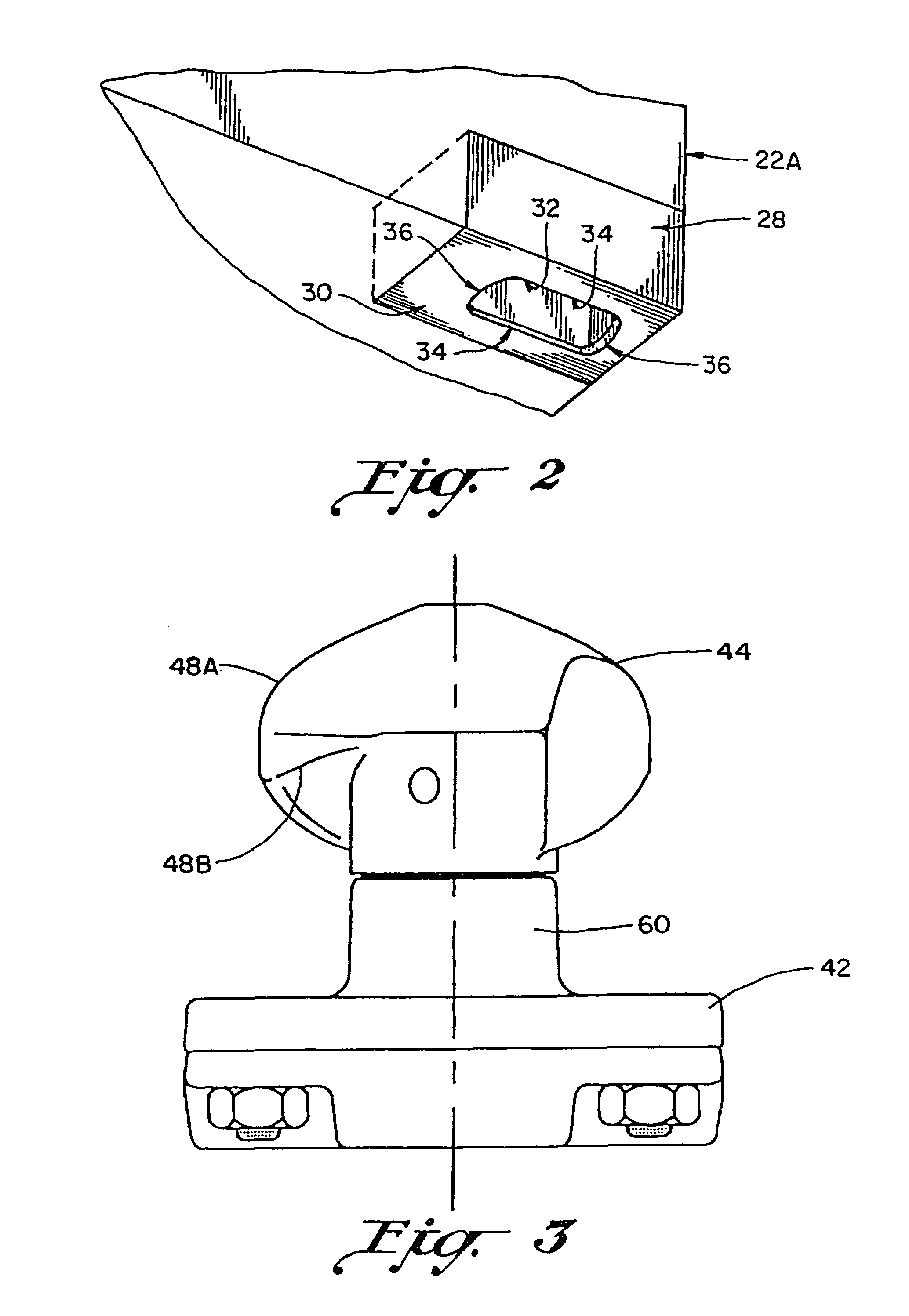Container securement device and system
a secure device and container technology, applied in the direction of loading/unloading vehicle arrangment, load accommodation, transportation items, etc., can solve the problems of inability to automatically enter and release containers, prior art does not teach the use of spiral torsional springs constructed from tempered steel
- Summary
- Abstract
- Description
- Claims
- Application Information
AI Technical Summary
Benefits of technology
Problems solved by technology
Method used
Image
Examples
Embodiment Construction
)
[0032]Referring now to the drawings, the preferred embodiment of the present invention concerns a container securement assembly 24 or system for securing an ISO type container 22 to a support structure 20 such as a carrier deck, which carrier deck is designed to haul ISO type containers through all types of environmental conditions, including often highly variable temperature conditions. Two ISO type containers 22 are illustrated and referenced in juxtaposed, end-to-end relation in superior adjacency to a support structure 20 in FIG. 1. Notably, the International Organization for Standardization (ISO) is an international standard-setting body composed of representatives from national standards bodies. The organization produces world-wide industrial and commercial standards, the so-called ISO standards. A standardized ISO type container (also known as an isotainer) can be loaded on support structures 20 of container ships, railroad cars, and trucks.
[0033]There are five common standa...
PUM
 Login to View More
Login to View More Abstract
Description
Claims
Application Information
 Login to View More
Login to View More - R&D
- Intellectual Property
- Life Sciences
- Materials
- Tech Scout
- Unparalleled Data Quality
- Higher Quality Content
- 60% Fewer Hallucinations
Browse by: Latest US Patents, China's latest patents, Technical Efficacy Thesaurus, Application Domain, Technology Topic, Popular Technical Reports.
© 2025 PatSnap. All rights reserved.Legal|Privacy policy|Modern Slavery Act Transparency Statement|Sitemap|About US| Contact US: help@patsnap.com



